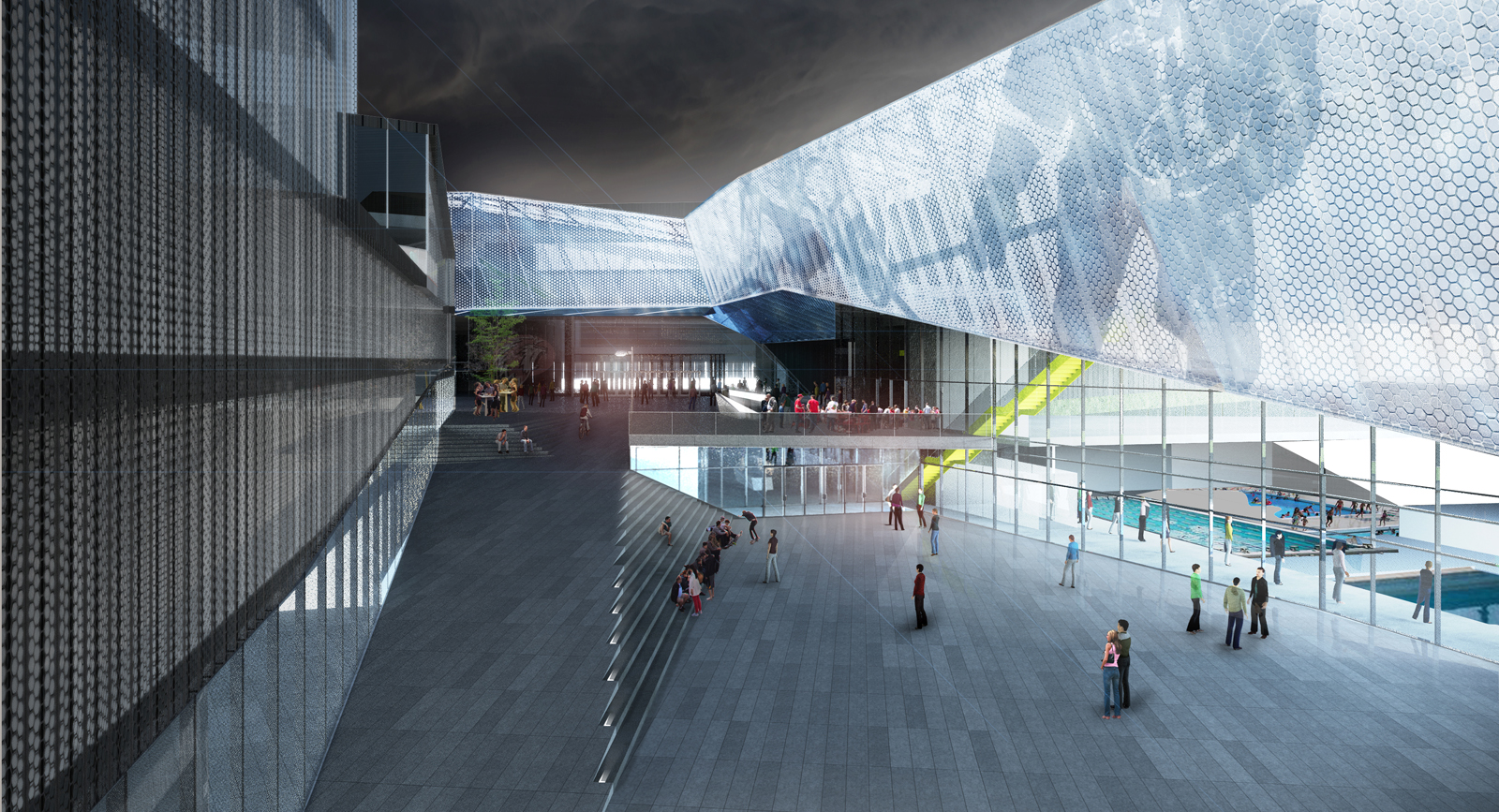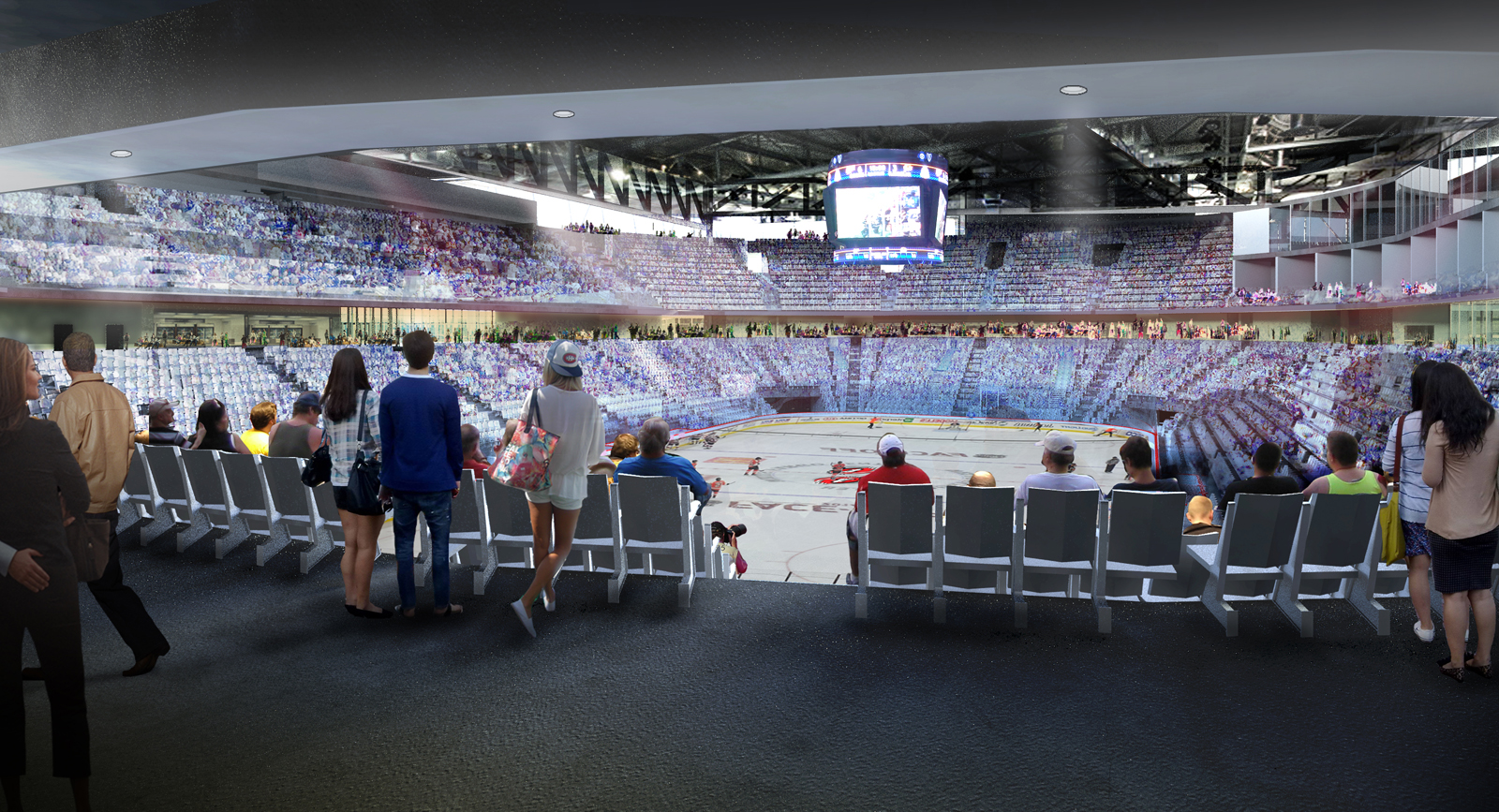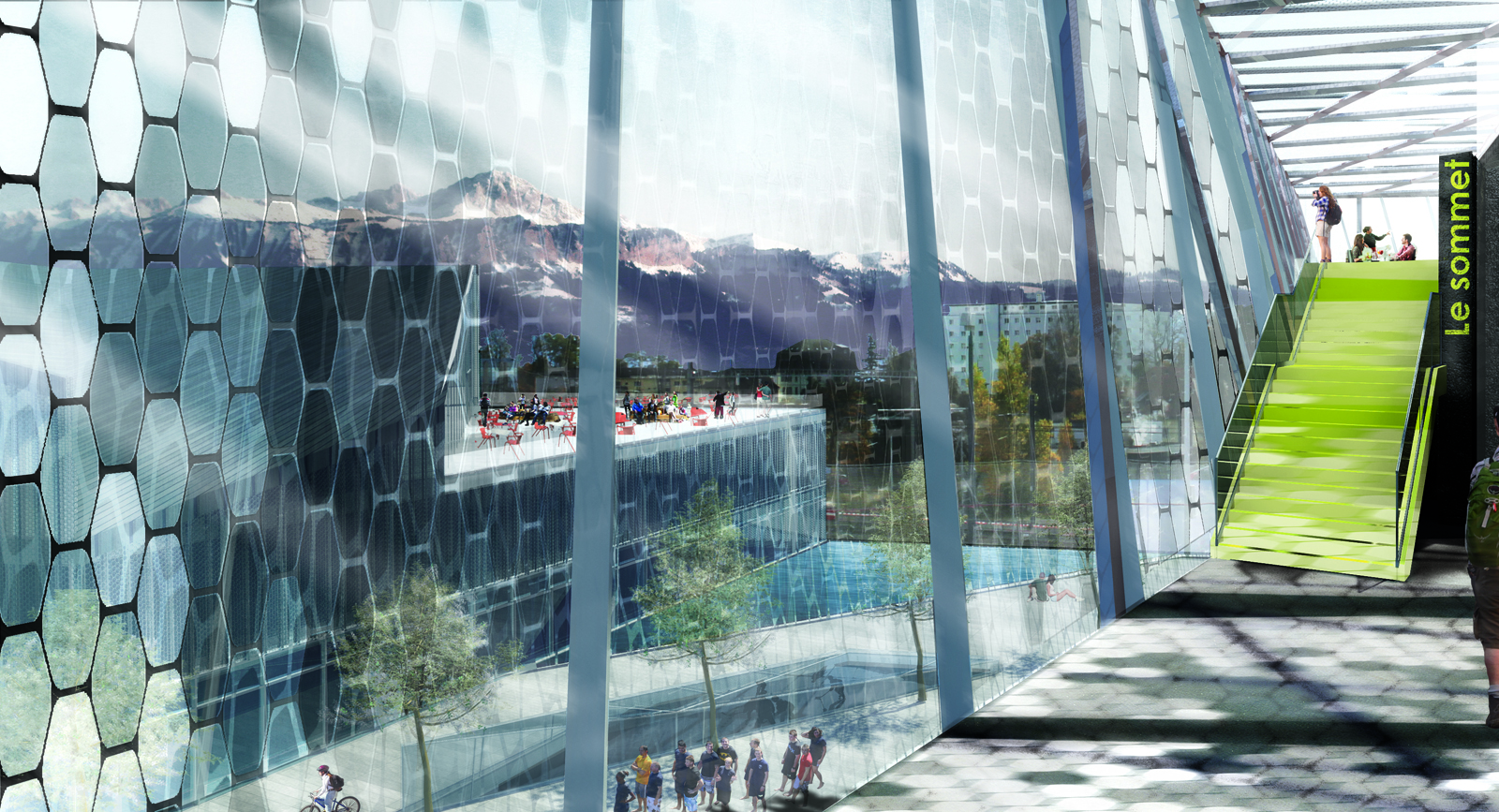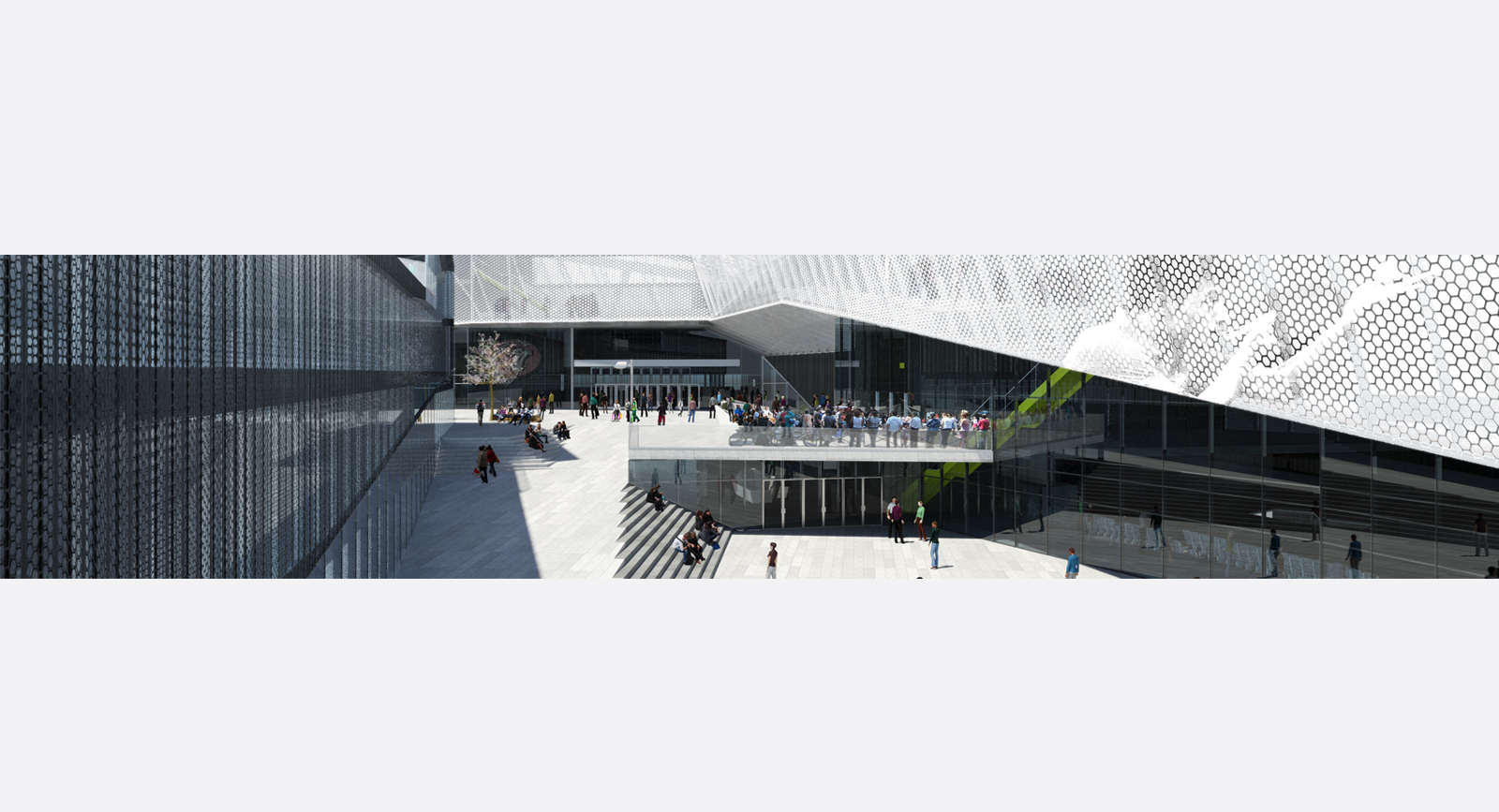Competition - Malley Intercommunal Center
Centre intercommunal de glace de Malley SA

Category
Culture , Commercial and administrative , Education, sports and leisure , Competition
Client
Centre intercommunal de glace de Malley SA
Location
Lausanne / Switzerland
Date
2015
Budget
230 M$
Area
31 235 m²
Credits
© ABCP architecture
Description
In preparationfor Lausanne’s application to host the 2020 Winter Youth Olympics and the 2022 FINA World Championships, the municipalities of Lausanne, Renens, and Prilly organized an architecture competition for the reconstruction of the Malley skating rink and the construction of an Olympic pool and other sports facilities such as table tennis and fencing gymnasiums. The estimated cost of the 30,000 m2 project is over 170 million Swiss francs, including:
- Three skating rinks, including one with a seating capacity of 10,000
- An aquatics center, including competition, warmup, diving, and wading pools as well bleachers with the capacity to seat 2,000
- Related facilities such as restaurants, concessions, changing rooms, and storage and service areas
- 15,000 m2 of commercial and office space for rent
- Indoor parking
The concept is based on the notion of celebration, offering a place where the city can come together in movement and wonder. The premise is one of interaction, which, regardless of whether it is artistic, social, sports- or landscape-related, involves both SEEING and FEELING.
The landscape provides our first experience of SEEING AND FEELING. A breathtaking phenomenon for some, an invitation to sports excellence for others, the Alps are a spectacle in themselves, to be enjoyed right from the site. They are an intrinsic part of the equation. The curves and lines of force that sculpt the project take their inspiration from this mythical topography, and Mont Blanc, Aiguille d’Argentière, and the Aravis Range will all be visible through interstitial gaps in the massing.
The fragmented layout is in keeping with center’s various functions and ensures the vitality of the exterior spaces. Due to its dominant position and formal detachment, the arena exerts its authority, serving as a center of attraction at the end of a city thoroughfare. A large, inclined basilaire connects the other volumes on the lower floors and serves as a hub for three urban spaces with different environments: the central Montée, made for crowds; the dynamic Échappée, reserved for games; and the Tremplin, a contemplative pace that dominates the landscape.
This urban concept gives pride of place to pedestrians, who are protected from vehicular traffic, which is relegated to the site’s periphery. The center is dedicated to walkers, and their contribution to the atmosphere of the site will not only be felt on the ground, but also on the façades and passageways, where it becomes the dynamic texture of a huge mobile tableau. The media interface between the buildings and the public space will display movements of the athletes in action. The fuzzy, shadowy images will reveal only the momentum and energy of the performance. This will be an abstract painting. Movement magnified into a veritable work of art.





